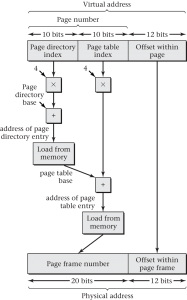How to Clear RAM Memory Cache, Buffer and Swap Space on Linux
- Clear PageCache only. # sync; echo 1 > /proc/sys/vm/drop_caches.
- Clear dentries and inodes. # sync; echo 2 > /proc/sys/vm/drop_caches.
- Clear PageCache, dentries and inodes. # sync; echo 3 > /proc/sys/vm/drop_caches.
- sync will flush the file system buffer. Command Separated by “;” run sequentially.
What is swap memory in Linux?
Swap is a space on a disk that is used when the amount of physical RAM memory is full. Swap space can take the form of either a dedicated swap partition or a swap file. In most cases when running Linux on a virtual machine a swap partition is not present so our only option is to create a swap file.
What happens when swap memory is full?
When the system needs more memory and the RAM is full, inactive pages in the memory will be moved to the swap space. Swap is not a replacement to physical memory, it is just a small portion on hard drive; it must be created during the installation.
How do I free up memory in Ubuntu?
In order to view the memory usage, we are using the Ubuntu command line, the Terminal application. You can open the Terminal either through the system Dash or the Ctrl+alt+T shortcut.
5 Ways to Check Available Memory in Ubuntu
- The free command.
- The vmstat command.
- The /proc/meminfo command.
- The top command.
- The htop command.
How do I change the swap size in Linux?
The basic steps to take are simple:
- Turn off the existing swap space.
- Create a new swap partition of the desired size.
- Reread the partition table.
- Configure the partition as swap space.
- Add the new partition/etc/fstab.
- Turn on swap.
Why does Linux use swap when there is free memory?
8 Answers. It is normal for Linux systems to use some swap even if there is still RAM free. Swap space usage becomes an issue only when there is not enough RAM available, and the kernel is forced to continuously move memory pages to swap and back to RAM, just to keep applications running.
Can I delete Linux swap partition?
It should be safe to simply remove the swap partition. While I personally never bothered removing it from /etc/fstab , it most certainly won’t hurt either. If it has a swap partition, it can move some data from RAM to swap to prevent the system from freezing.
What does swap memory mean?
A swap file (or swap space or, in Windows NT, a pagefile) is a space on a hard disk used as the virtual memory extension of a computer’s real memory (RAM). Having a swap file allows your computer’s operating system to pretend that you have more RAM than you actually do.
How do I check swap space?
Steps
- From your root userid, enter the command “swapon -s”. This will show your allocated swap disk or disks, if any.
- Enter the command “free”. This will show both your memory and your swap usage.
- In either of the above, look for the used space, compared to the total size.
Why is swap used?
Swap is used to give processes room, even when the physical RAM of the system is already used up. In a normal system configuration, when a system faces memory pressure, swap is used, and later when the memory pressure disappears and the system returns to normal operation, swap is no longer used.
How do I free up space on Linux?
Freeing disk space on your Linux server
- Get to the root of your machine by running cd /
- Run sudo du -h –max-depth=1.
- Note which directories are using a lot of disk space.
- cd into one of the big directories.
- Run ls -l to see which files are using a lot of space. Delete any you don’t need.
- Repeat steps 2 to 5.
How do I monitor memory in Linux?
5 commands to check memory usage on Linux
- free command. The free command is the most simple and easy to use command to check memory usage on linux.
- /proc/meminfo. The next way to check memory usage is to read the /proc/meminfo file.
- vmstat. The vmstat command with the s option, lays out the memory usage statistics much like the proc command.
- top command.
- htop.
How do I clear my RAM cache?
Clear Memory Cache on Windows 7
- Right-click anywhere on the desktop and select “New” > “Shortcut.”
- Enter the following line when asked for location of the shortcut:
- Hit “Next.”
- Enter a descriptive name (such as “Clear Unused RAM”) and hit “Finish.”
- Open this newly created shortcut and you will notice a slight increase in performance.
Photo in the article by “Open Educational Resources on GitLab” https://oer.gitlab.io/OS/Operating-Systems-Memory-I.html

